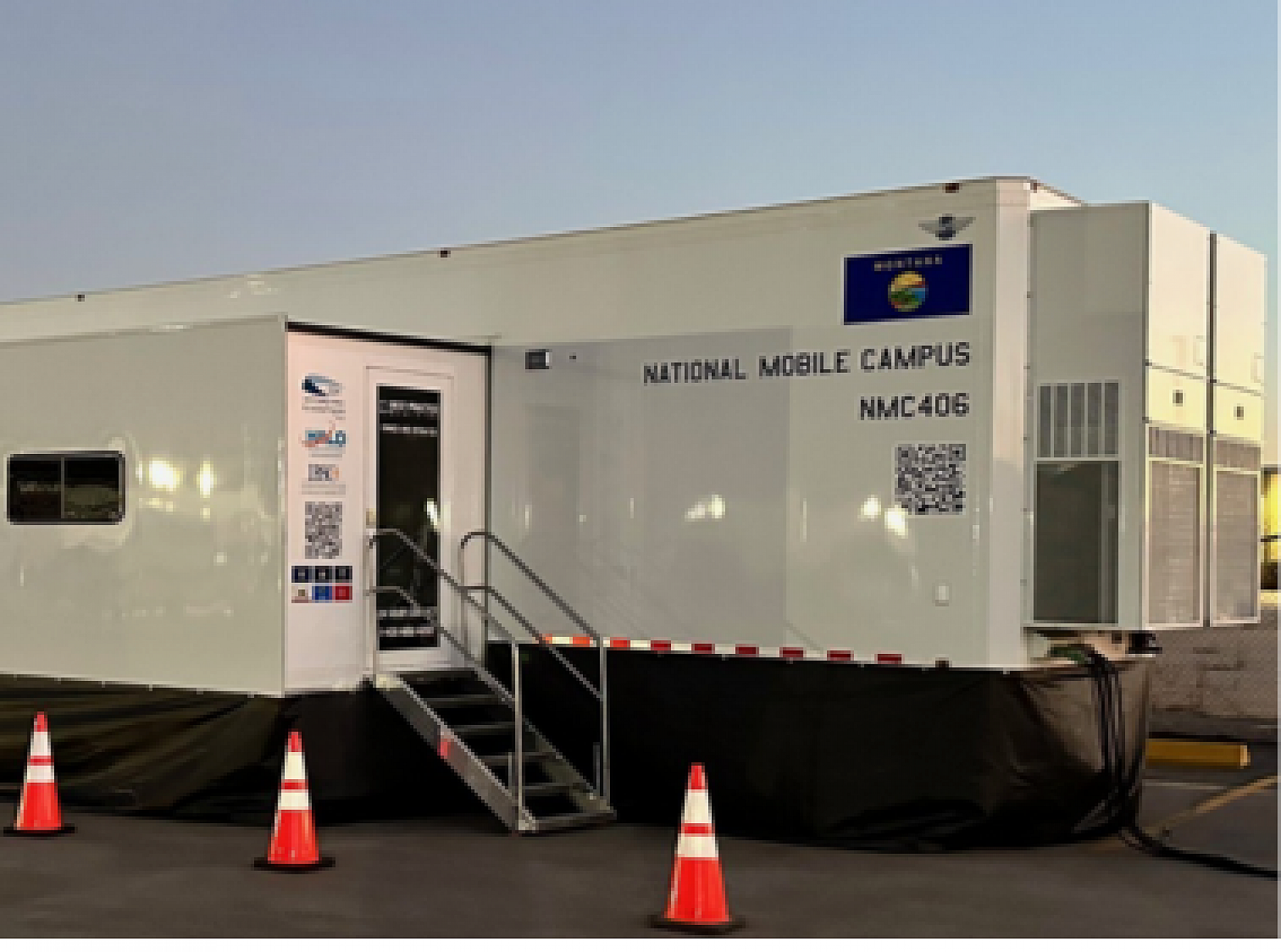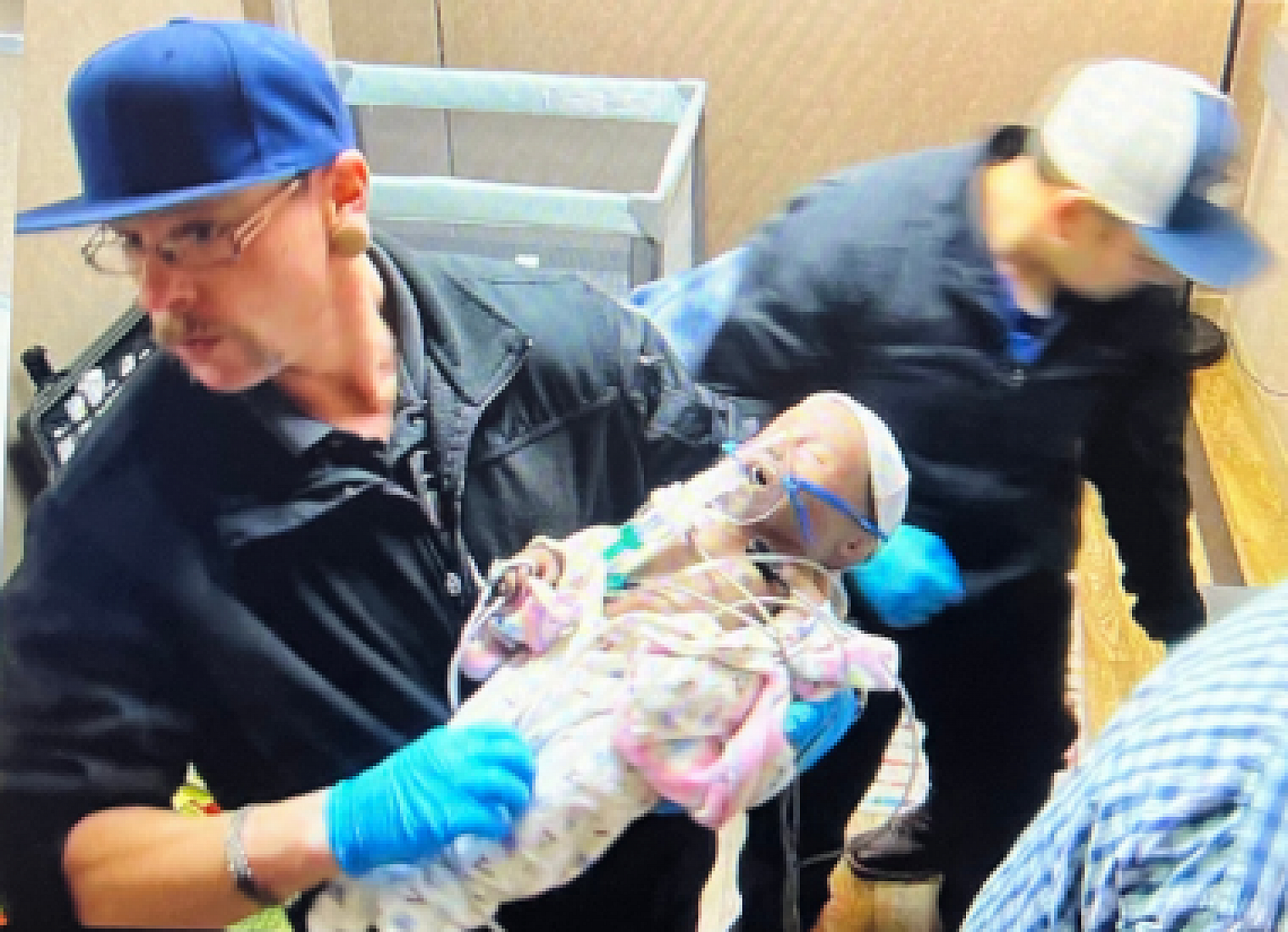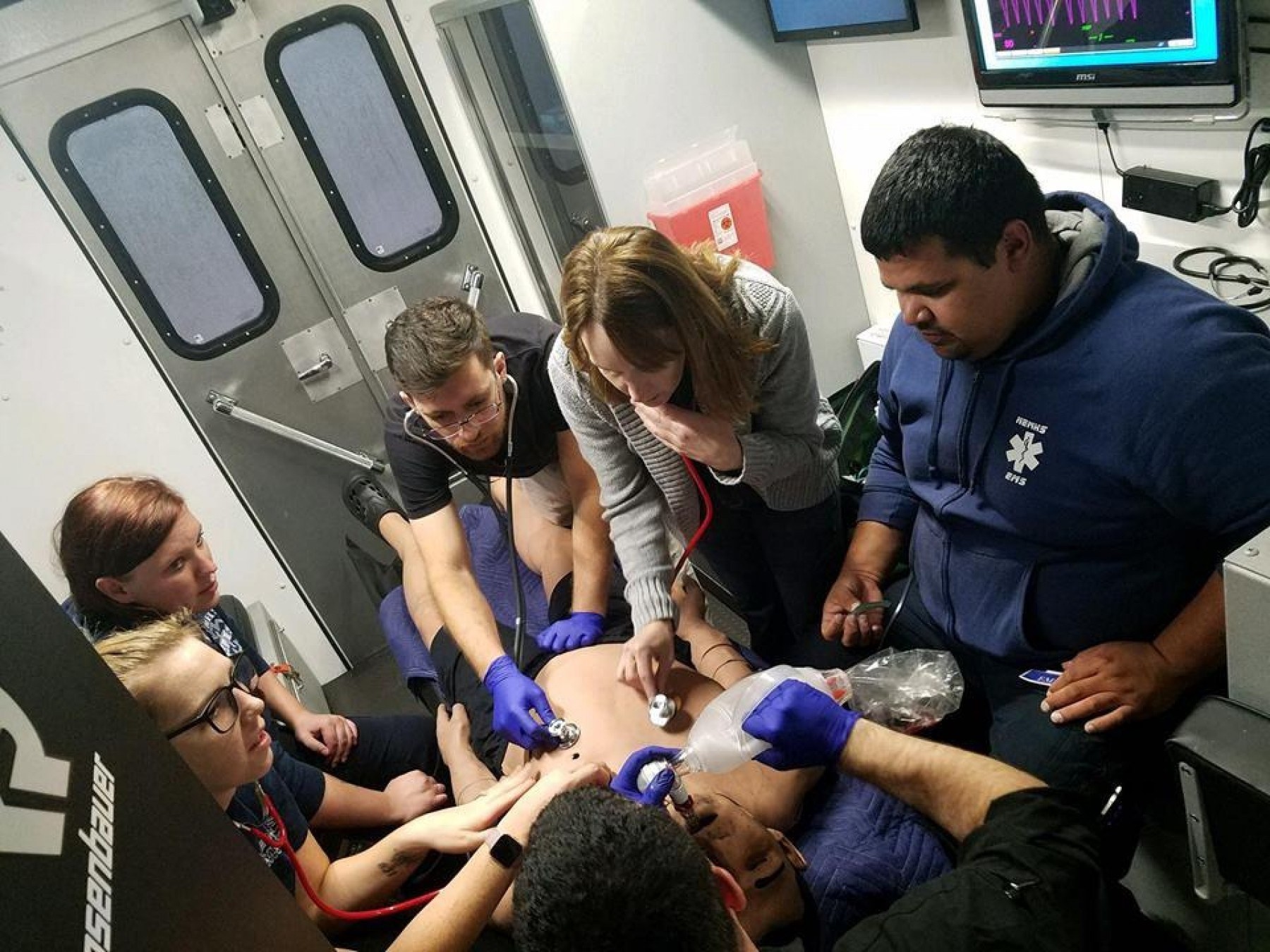
Real preparation for real life.
National Mobile Campus #NMC406 is the first fully accredited mobile simulation program in the world. We believe that all clinicians deserve access to a meaningful education that improves and saves lives. No matter where we will be here.
Learn More
Learning on a computer sucks.
You know it, we know it, our patients know it. To truly practice and prepare for emergency and critical care clinicians needs realistic, in-person, hyper-realistic experiences, so we built HALO.
HALO Certification
High-Fidelity Simulation
Simulation increases team performance, addresses communication dynamics, and reduces medical errors. Prepare your staff using hyperrealistic, objective-based patient care events.
Learn MoreInitial Education
Our EMR, EMT, and AEMT courses are redefining how emergency care providers learn. Built on hands-on training and the latest evidence-based methods, these programs evolve with the science—so your team is always ready for what’s next.
Recerts Made Simple
We get it—keeping up with certifications is tough. That’s why we offer streamlined refreshers for all EMS license levels, plus CE hours for AHA, PHTLS, IBSC, and more.
Stay current without the hassle. We’re here to make it easier.
Card Courses, Done Right
From your first ACLS to your tenth PALS renewal, AHA certifications can be tough—we get it. Every member of our team maintains their own clinical credentials, too. We’re here to make recertification easier, faster and built around what you really need.
Training Built Around You
Need something specific? We bring high-impact courses to your team—on-site or online—with live instruction and real interaction. Don’t see the course you need? We’ll build it with you. Let’s create training that fits your people, your goals, and your mission.

Training That Protects Lives and Preserves Futures
You’ve seen it, too—critical moments where a split-second decision changes everything. Not just life or death, but the difference between someone going home or facing months—or years—of recovery.
We’re not here to sell training. We’re here to partner with you to stop preventable harm. With immersive, experience-based education, we help your team make the right decisions, right when it matters most
Contact UsEMR
The NREMT Emergency Medical Responder (EMR) Course is ideal for law enforcement and other first responders. The focus EMR is to provide basic primary emergency care for critical and emergent patients.
Visit Emergency Medical Responder (EMR)Emergency Medical Technician (EMT)
With locations in Bozeman and Flathead Montana, an EMT training course is a great place to launch your career in medicine. Learn more & sign up here for our next Emergency Medical Technician course.
Visit Emergency Medical Technician (EMT)AEMT
Take the next steps in your EMS career and become and Advanced Emergency Medical Technician. Our team of educators represent hundreds of years of combined experience, making this the best AEMT course!
Visit Advanced Emergency Medical Technician (AEMT)CPR for Providers
American Heart Association training: Basic Life Support (BLS) - CPR Courses: BLS Instructor Led (CPR), BLS Renewal (Instructor led), BLS HeartCode (CPR), and BLS Accelerated HeartCode (CPR).
Visit Basic Life Support (BLS) - CPR CoursesACLS
Our American Heart Association ACLS training courses include: ACLS - Instructor Led; ACLS Renewal Course (Instructor led); ACLS HeartCode (Blended); and ACLS Accelerated HeartCode (Blended).
Visit Advanced Cardiac Life Support (ACLS) CoursesPALS
Our American Heart Association (AHA) training for Pediatric Advanced Life Support (PALS) Courses include: PALS Instructor Led, PALS Renewal (Instructor led), and PALS HeartCode. See you soon!
Visit Pediatric Advanced Life Support (PALS) CoursesCPR
Learn the life-saving techniques of high-quality CPR, the use of an AED (Automated External Defibrillator), and First Aid, taught by American Heart Association Heartsaver training professionals.
Visit CPR/AED/First Aid - General PublicAHA Courses
We're a licensed American Heart Association training site, here to help you maintain your clinical certifications. Whether it's BLS, ACLS, PALS, or Heartsaver, we've got your back.
Visit American Heart Association Courses
High Acuity Low Occurrence
High Acuity Low Occurrence (HALO) Certification is the standard in preparing Paramedics, Physicians and nurings for emergency medicine cases using simulation based education and experiential learner.
Visit High Acutely Low Occurrence (HALO)Naloxone Training
Best Practice Medicine is coordinating the MT statewide effort of training Naloxone Master Trainers to combat the rise of opiate overdoses. This free training involves an online course & a Skills Sess
Visit Naloxone TrainingStop The Bleed
We're proud to offer Stop the Bleed training to you and your staff. You will learn basic training in bleeding control principles that will enable you to provide immediate, first-on-the-scene aid.
Visit Stop The BleedPHTLS
NAEMT's Prehospital Trauma Life Support (PHTLS) is recognized around the world as the leading continuing education program for prehospital emergency trauma care. Contact us to schedule this course.
Visit PHTLSCustom Courses
Some of our Custom Courses include Capnography - The Fifth Vital Sign, Advanced 12-Lead ECG Interpretation, and Difficult Airway Management. Please contact us for more information or to build a course
Visit Custom CoursesCPR for Providers
American Heart Association training: Basic Life Support (BLS) - CPR Courses: BLS Instructor Led (CPR), BLS Renewal (Instructor led), BLS HeartCode (CPR), and BLS Accelerated HeartCode (CPR).
Visit Basic Life Support (BLS) - CPR CoursesEMS Refreshers
Find the EMS Refresher course you need: EMT Refreshers, Combination Paramedic AEMT EMT NCCP Refreshers; Critical Care Refreshers; Flight Paramedic Renewal Courses, and much more.
Visit EMS RefreshersState Wide Programs
We help Federal and State governments manage, implement, and scale multiple education initiatives and programs to the benefit of all citizens.
Naloxone Training
Best Practice Medicine is coordinating the MT statewide effort of training Naloxone Master Trainers to combat the rise of opiate overdoses. This free training involves an online course & a Skills Sess
Visit Naloxone TrainingWhy Train With Us
- We believe in quality, not quantity. For us, this isn’t about a certificate; it’s about preparing you to save lives. To maximize your learning experience we adhere to the best practice National Standards of a 6 to 1 student to instructor ratio. This means you get the attention and training you need to succeed.
- We are the only NEA accredited training site in Gallatin County.
- Who you train with matters. Train with professions to become a professional. We are board certified physicians, paramedics, nurses, and EMTs.
- Our core values as a company are positive energy, learner and learning first, can-do fighting spirit, radical support, and fanatical attention to detail.
- You are taught in a specialized medical training classroom built to help and enhance your learning experience.
- At Best Practice Medicine, we staff the highest caliber people to be in the best seat possible for them and for our team.
- We are proud to offer HANDS ON learning to all of our students, so they can be best equipped to take on the EMS world.
- We use brand new, state of the art, equipment and methodologies to make sure you’re learning the best and most up-to-date information and techniques.
- Our staff are trained in the latest teaching pedagogy with special emphasis on adult learning.
- Adhering to quality and high standards, we are independently tested.
- Our staff come in early and leave late to guarantee you have the best possible opportunity to be the best you can be.
- We love what we do and we love teaching you.